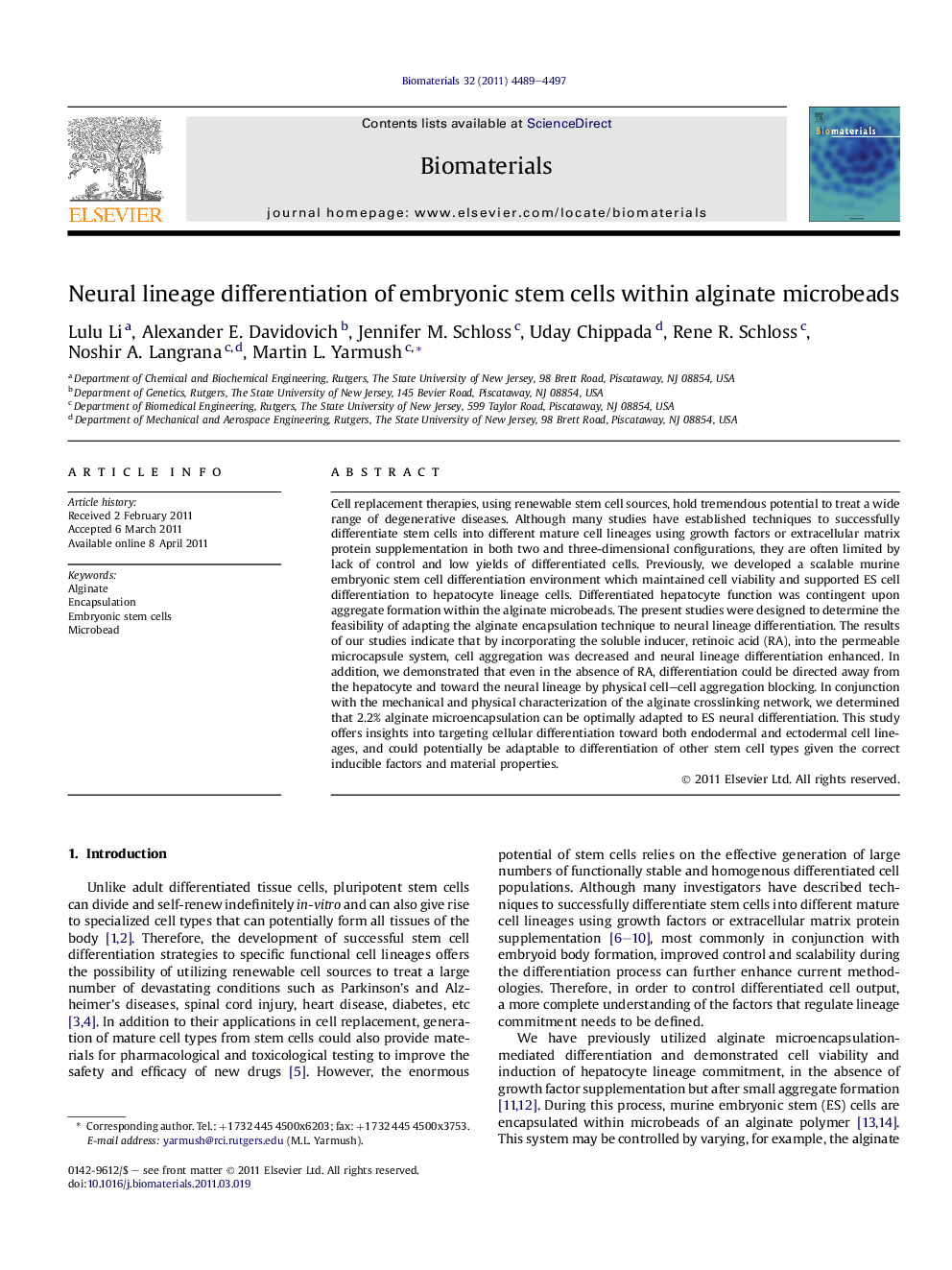| Article ID | Journal | Published Year | Pages | File Type |
|---|---|---|---|---|
| 7681 | Biomaterials | 2011 | 9 Pages |
Cell replacement therapies, using renewable stem cell sources, hold tremendous potential to treat a wide range of degenerative diseases. Although many studies have established techniques to successfully differentiate stem cells into different mature cell lineages using growth factors or extracellular matrix protein supplementation in both two and three-dimensional configurations, they are often limited by lack of control and low yields of differentiated cells. Previously, we developed a scalable murine embryonic stem cell differentiation environment which maintained cell viability and supported ES cell differentiation to hepatocyte lineage cells. Differentiated hepatocyte function was contingent upon aggregate formation within the alginate microbeads. The present studies were designed to determine the feasibility of adapting the alginate encapsulation technique to neural lineage differentiation. The results of our studies indicate that by incorporating the soluble inducer, retinoic acid (RA), into the permeable microcapsule system, cell aggregation was decreased and neural lineage differentiation enhanced. In addition, we demonstrated that even in the absence of RA, differentiation could be directed away from the hepatocyte and toward the neural lineage by physical cell–cell aggregation blocking. In conjunction with the mechanical and physical characterization of the alginate crosslinking network, we determined that 2.2% alginate microencapsulation can be optimally adapted to ES neural differentiation. This study offers insights into targeting cellular differentiation toward both endodermal and ectodermal cell lineages, and could potentially be adaptable to differentiation of other stem cell types given the correct inducible factors and material properties.
